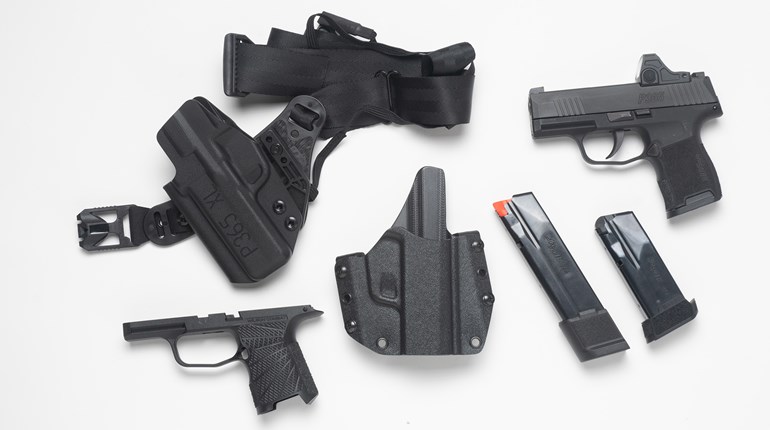Today on Rifle Roundup, we have a left-handed AR-15 from Rock River Arms that’s topped with a Low Power Variable Optic (LPVO) from Primary Arms, along with an angled foregrip.
Rock River Arms LEF-T TACTICAL OPERATOR-L AR-15 MSRP $1540
When you stop to think about it, you begin to realize that the AR-15 is an amazing rifle. Lightweight and compact, it’s almost infinitely adaptable to whatever you want it to be. However, practically every AR-15 out there has an ejection port on the left hand side of the upper receiver. This isn’t a problem for right-handed shooters. However, for lefties and people like me who are cross-eye dominant, this means that any leftover gasses and unburnt propellant that may fly out of the ejection port winds up right in front of our face, where it’s easy to breathe in and pollute our lungs.
A left-handed AR like the Rock River Arms LFT-T, on the other hand, has more than just left-handed controls. Rather, it also has an ejection port that’s moved to the right hand side of the upper receiver, which means the bolt-carrier group is also flipped. This limits your ability to change out receivers or bolt carrier groups, but it also means you can breathe freely when firing your AR-15 for extended periods of time.
One thing that took a while to get used to is how the controls are set up on the lower receiver. The magazine catch is on the left side, right where you would expect it, however, above that is the bolt release, and there is no corresponding bolt release on the right side of the upper receiver. I have gotten used to operating the bolt release with the trigger finger of my firing hand, so it took me a second to adapt to smacking it closed with the palm of my off hand in a manner similar to how most right-handed AR-15 users run their guns.
Other than that, the LFT-T Operator-L is a fairly typical AR-15. It has a 16-inch barrel with a mid-length gas tube, and there are Picatinny rails on all sides of the fore-end. The gas block has a folding flip-up sight and sling attachment points, and it has a six-position collapsible buttstock. The two-stage trigger is quite nice, and the entire package shows off the quality and workmanship that Rock River Arms puts into the guns.
Primary Arms GLX 1-6x24mm Low Power Variable Optic MSRP $399.99
This optic trips two of my switches: I have found Primary Arms Optics to be some of the best of the lower-priced optics out there, and I really like using a 1-6X LPVO on a defensive carbine. I’ve found that a 1-6X optic can help me make hits out to 500 yards if needed, but at 1X, it’s a fast and easy way to get on-target at close range, while 6X is more than enough to make hits at any reasonable defensive distance. The lower top-end magnification means it’s easier and faster to get set up behind the scope, thanks also to a larger “eye box” behind the optic.
The ACSS reticle inside this optic provides the user with an intuitive holdover system with built-in ranging and wind holds. There is a halo around the crosshairs for holding on a moving target, and that same halo can give you quick-center mass hits at close ranges. The model I chose for this review has MOA subtensions, allowing for range estimation at maximum power as well as holds for both windage and elevation when engaging targets.
Other nice touches on this optic are an illuminated reticle and a removable quick throw lever, which allows you to adjust the magnification of the optic with a flick of your wrist.
Stark Equipment Angled Foregrip
A few years ago, I wrote an article on the different angled foregrips on the market at the time, and I ended up keeping the Stark Equipment grip I had in for review. Unfortunately, that company is no longer with us, but the idea of the angled foregrip is more popular than ever. This is due, in part, to the popularity of large format pistols, which tend to have shorter barrels than full-sized rifles. This in turn means there is less real estate on the forend to place your support hand, and if that support hand wanders near the muzzle when you’re shooting, it will not go well for you or your hand.
An angled foregrip helps prevent this from happening by giving you a tactile clue for your optimal hand position on your gun. Also, because they’re angled slightly, they give a more comfortable and more natural grip on your gun. While the Stark Equipment grip isn’t made anymore, you can find similar grips from Magpul, Bravo Company and Strike Industries. Magpul, in fact, makes two different styles of angled grip, a testimony to the continuing popularity of this accessory.























